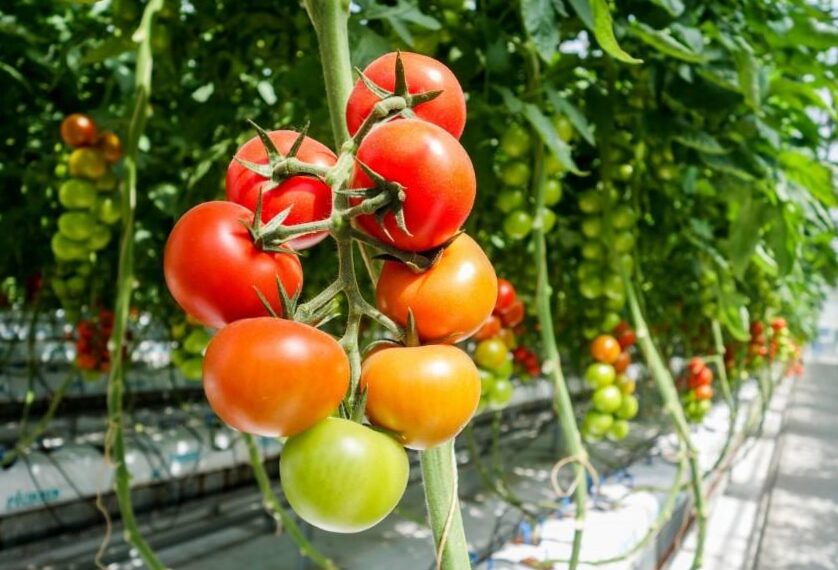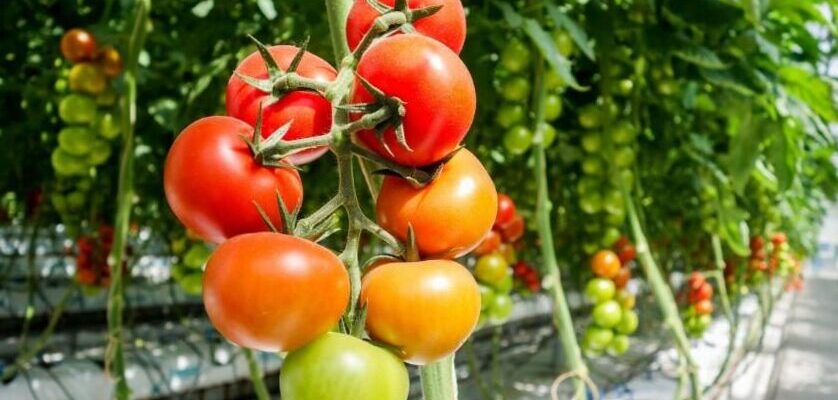Tomatoes are among the most popular vegetables in our country. Romanians are large consumers, but also tomato producers. There are countless types of tomatoes, each with different qualities. In this article we will briefly take care of the varieties of tomatoes, offering some tips to grow them in the greenhouses and solariums.
What should we know about tomatoes?
Tomatoesscientifically called Solano TomatoThey come from the territory of Latin America and will then be cultivated in southern Europe in countries such as Portugal and Spain.
Tomatoes are indispensable products in our diet, the frescoes can be consumed, in salads, sauces, but they can also be industrially processed to obtain broths, tomato paste, fruit juices, etc.

In addition to the appreciated flavor and the aroma of the tomato, they offer the countless benefits for the health of the body, through their composition they provide a wide range of mineral salts, vitamins, organic acids, water and lycopene.
What makes them really special is the last element, lycopeneWhich is a powerful antioxidant and is absorbed more quickly in pasta -shaped tomatoes. As a result of the research, the effect of lycopene on the body has been demonstrated, preventing the appearance of some types of cancer. At the same time, being an important source of vitamins and potassium, tomato consumption reduces the risk of cardiovascular diseases.
For the production of tomatoes in greenhouses and solariums, various aspects relating to the type of tomato must be taken into consideration in terms of the vegetative period, type of growth, place of crop and which type of semi we use.
What types of tomatoes exist?
From the point of view of the vegetative period, the tomatoes are divided into:
-
- Early varieties, with a vegetative period between 90-110 days;
-
- Semiprove variety, with a vegetative period between 110-120 days;
-
- Semi-life variety, with a vegetative period between 120-130 days;
-
- Late varieties, with a vegetative period of over 130 days.
According to the type of growth, tomatoes can have:
-
- Of indeterminate growth, the tomatoes grow continuously and bring fruits for a long time, form soils and, due to their large size, require a support system. This type of tomato is suitable for greenhouses and solarium.
How are tomatoes grown?
The cultivation of tomato is carried out by planting seedlings in March and ending in mid -September.
Serre and Solarium tomatoes can be produced in 3 cycles:
-
- Production cycle i: Sowing will be made during the winter (January-February) and the plantation will be produced in early spring. The tomato collection can start from May.
-
- Production cycle II: The sowing will be performed in the spring and the plantation will be held from June to the second half of July. The tomato collection can start from August or September.
-
- Intermediate cycle: The sowing will be made in March, planting in May. The tomato harvest will be made from July.
Tomatoes in greenhouses and solariums require complex and constant care to enjoy quality products:
-
- Fill the empty spaces It is the first step we have to do to keep the sowing permit, the works must be performed within 15 days of sowing;
-
- Due to their large size, plants need support, which we can provide with our help. Employee (Expected on thread or Arache);
-
- The child Implies the elimination of outbreaks that can compete for food with the main stem;
-
- meat cake It has the function of accelerating the ripening of the fruits that break the tip of the stem after the last inflorescence;
-
- The default which consists in removing dried and dry leaves;
-
- Fight against diseases and parasites. What can influence the cultivation of tomato is quantitatively and qualitatively.
Types of tomato seeds
There are different types of tomato seeds that can be purchased commercially. These are known as Professional seeds OR Hobby seeds.
The professional seeds have a series of advantages related to resistance to diseases, high production capacity, vigorous plants and uniform growth and if this was not enough, the ability to adapt to the conditions of the greenhouses or solar.
Some examples of professional seeds:
-
- Treasury – Buy Heart: Semi -priest variety of indeterminate growth. It is planted after March 20, the fruit will have a dark red color, high water and shape of the heart. Its weight varies between 140 and 180 g.
-
- Native variety of Elisabeta: indeterminate growth tomato. They produce large fruits, with a weight between 230 and 250 g. The shape is round and the aroma strong.
-
- Native variety of Ghittia: Precocos of indeterminate growth. The plant will be vigorous and will produce large and round fruit, of about 250-300 g. The color of the fruit is intense red.
-
- Mahito f1: Tomato Semi -Recall, indeterminate growth. The plant is very productive and resistant to diseases. The weight of the fruit is 250-300 GY The flavor is strong.
-
- Group F1: Precocos of indeterminate growth. The fruit has intense red, uniform ripe, approximate weight of 180 GY high tolerance to diseases and tomato nematodes.
At the same time, in addition to professional seeds, it is also possible to buy seeds for fans.
Hobby seeds are suitable for amateur gardeners who grow tomatoes in small quantities for their consumption. This type of seed is suitable for any cultivation space: gardens, solarium, fields.
Tomatoes are one of the most nutritious and common vegetables in our fields. Whether we grow them for our family or sell them, we want to obtain a healthy and tasty production. The treatment that we dedicate to cultivation and growth process guarantees the expected result and the first requirement is the careful choice of products. The seeds. What kind of tomato seeds will you use next year?

How to cook winter radishes?

FLOWER CLOVE-MARITIMA ARMERIA: Cultivation and care

The importance of bees for pollination

The final guide on how to plant, take care and discover the origin of Coleonema

The wisdom of the garden: the influence of popular proverbs on the plantation and the care of natural flowers

Let's discover the rose and its secrets: the May plant

Friar Kiss – Balsamin Family

Amarilis – Learn to take care (Hippeastrum Hybridum)

CHANTRIERI NOC – The bat flower has flowers resemble the bats


